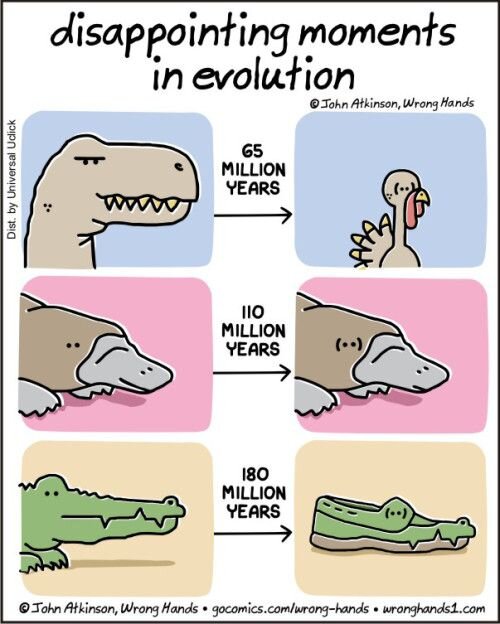Does Glacier Algae Contradict Evolution’s Rules?
Evolution is generally considered a “march of progress” as creatures supposedly become more complex over time. But a new study of purple algae that lives in the extreme environment of glaciers is “contradicting” this idea—instead of gaining complexity, it supposedly lost a large amount of information and then remained the same for hundreds of millions of years. And that’s evolution? Aren’t you convinced?
So here’s a little more on the study. Scientists sequenced and then analyzed the DNA of one particular species of algae, Ancylonema nordenskiöldii, which contains a purple pigment that “acts like a sunscreen,” protecting it on the frozen wasteland where it lives. The researchers determined “that the evolution of this purple pigment was probably vital for several adaptations in glacier algae,” including the ability to survive in low temperatures and keep from drying out. They then isolated the genes responsible for these adaptations and “wanted to understand when this adaptation evolved in Earth’s deep history.”
After looking at the genetic and fossil data—and applying an evolutionary worldview and interpretation—they concluded that glacier algae evolved sometime around 520–455 million years ago. They believe these algae came from an ancient group that shared a common ancestor with land plants and lived 720–635 million years ago. This group, they argue, was multicellular which means today’s glacier algae “lost the ability to create complex multicellular forms” because of “a huge loss of genetic diversity . . . mainly linked to multicellular development.” After that loss of diversity, “these algae became simple and persevered to the present day.”
So when organisms change and (supposedly—though it’s never been observed) gain new information, that’s evolution. But when organisms lose information and then stay the same for tens of millions of years, that’s evolution? As we’ve said before, evolution is such a plastic idea, it flexes and molds to any and every piece of evidence, even when the new evidence is opposite to what the model predicts!
When we look at glacier algae, we understand that God created various algae kinds that have since diversified and adapted to a wide range of environments, including glaciers (these extreme ecosystems didn’t exist until after the flood. Today’s glaciers are leftovers from the post-flood ice age). Additionally, since they assume evolution is true, the researchers analyze the similarities and differences among organisms using phylogenetics (which already assumes algae-to-astronaut evolution is true) and found that supposedly close relatives are missing the genes for purple pigment. Therefore, they assume that this species developed those genes by expanding its gene family, without any evidence other than phylogenetic assumptions.
The information for adaptations such as purple pigments was put there by God in the beginning—natural selection just selected for it, likely resulting in a loss of preexisting genetic information. But nothing new was created or added—the information was always present in the genome of the alga.
A biblical worldview, confirmed by observational science, explains what we see in glacier algae—an evolutionary worldview does not.
by Ken Ham on June 27, 2024
Since there is no evidence for evolution, we can determine, as we've always known, that the evidence for God's creation is overwhelming. Some might still think otherwise, but what do they know?
So here’s a little more on the study. Scientists sequenced and then analyzed the DNA of one particular species of algae, Ancylonema nordenskiöldii, which contains a purple pigment that “acts like a sunscreen,” protecting it on the frozen wasteland where it lives. The researchers determined “that the evolution of this purple pigment was probably vital for several adaptations in glacier algae,” including the ability to survive in low temperatures and keep from drying out. They then isolated the genes responsible for these adaptations and “wanted to understand when this adaptation evolved in Earth’s deep history.”
After looking at the genetic and fossil data—and applying an evolutionary worldview and interpretation—they concluded that glacier algae evolved sometime around 520–455 million years ago. They believe these algae came from an ancient group that shared a common ancestor with land plants and lived 720–635 million years ago. This group, they argue, was multicellular which means today’s glacier algae “lost the ability to create complex multicellular forms” because of “a huge loss of genetic diversity . . . mainly linked to multicellular development.” After that loss of diversity, “these algae became simple and persevered to the present day.”
So when organisms change and (supposedly—though it’s never been observed) gain new information, that’s evolution. But when organisms lose information and then stay the same for tens of millions of years, that’s evolution? As we’ve said before, evolution is such a plastic idea, it flexes and molds to any and every piece of evidence, even when the new evidence is opposite to what the model predicts!
When we look at glacier algae, we understand that God created various algae kinds that have since diversified and adapted to a wide range of environments, including glaciers (these extreme ecosystems didn’t exist until after the flood. Today’s glaciers are leftovers from the post-flood ice age). Additionally, since they assume evolution is true, the researchers analyze the similarities and differences among organisms using phylogenetics (which already assumes algae-to-astronaut evolution is true) and found that supposedly close relatives are missing the genes for purple pigment. Therefore, they assume that this species developed those genes by expanding its gene family, without any evidence other than phylogenetic assumptions.
The information for adaptations such as purple pigments was put there by God in the beginning—natural selection just selected for it, likely resulting in a loss of preexisting genetic information. But nothing new was created or added—the information was always present in the genome of the alga.
A biblical worldview, confirmed by observational science, explains what we see in glacier algae—an evolutionary worldview does not.
by Ken Ham on June 27, 2024
Since there is no evidence for evolution, we can determine, as we've always known, that the evidence for God's creation is overwhelming. Some might still think otherwise, but what do they know?













